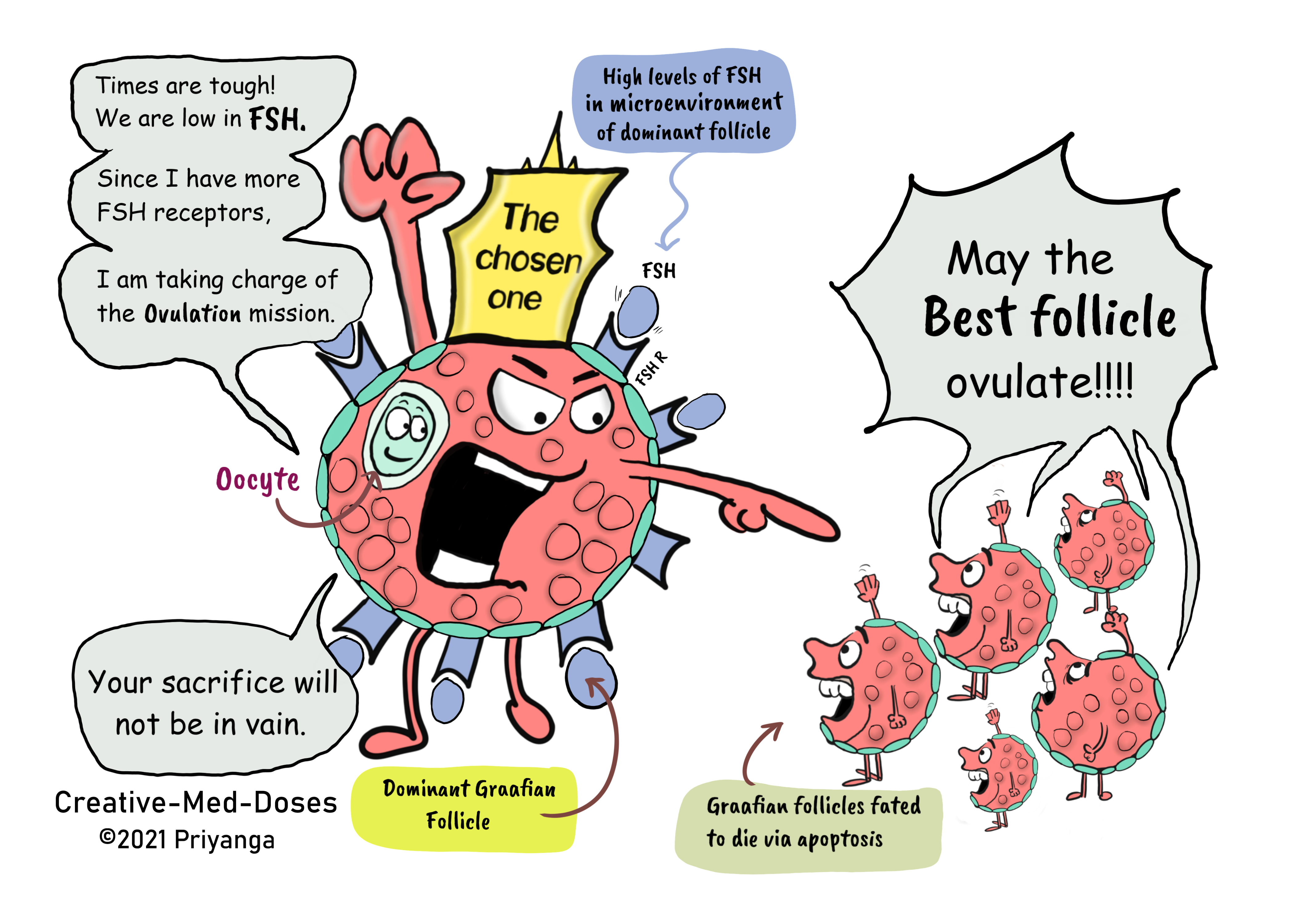Selection of the Dominant Follicle and microenvironment
In every menstrual cycle, the ovaries select and induce the growth of a single dominant follicle that participates in single ovulation. The selection of the dominant follicle is under the control of the hormones FSH and LH.
Any interference directly or indirectly with the normal action of the gonadotropins can lead to apoptosis of follicles and may cause infertility.
Morphometric analysis of healthy ovaries showed that the dominant follicle which ovulates in the subsequent cycle is selected from healthy follicles measuring 4.7 ± 0.7 mm in diameter at the end of the luteal phase of the menstrual cycle. The selection of the dominant follicle occurs at the late luteal phase of the menstrual cycle.
The dominant follicle has a high rate of mitosis in the granulosa cells, it is the characteristic feature of the dominant follicle.
When one follicle is selected, the granulosa cells in the chosen follicle continue dividing at a relatively fast rate. And proliferation slows in the granulosa cells of the other follicles. These follicles will become atretic follicles eventually (dies via apoptosis).
How the dominant follicle is selected
The secondary rise in plasma FSH is a must to find/select dominant follicles.
The secondary FSH rise in women begins a few days before the progesterone levels fall to basal levels at the end of the luteal phase. And the FSH levels remain elevated during the first week of the follicular phase of the cycle.
When it grows, it also secretes estradiol which sends negative feedback to the hypothalamus and reduces the secretion of FSH. This reduction of FSH makes sure that there is only one dominant follicle per cycle.
The rise in plasma FSH leads to a progressive accumulation of relatively high concentrations of FSH in the microenvironment of the follicle with the highest number of FSH receptors. It takes up FSH fast and grows to become a dominant follicle.
In dominant follicles, FSH in follicular fluid induces cytochrome P450 activity that metabolizes androgen substrate to estradiol. In such follicles estradiol, and androstenedione (A4) accumulate in very high concentrations in the follicular fluid.
The estradiol produced by the dominant follicle inhibits the secondary rise in FSH by a negative feedback mechanism. It ensures a subthreshold level of FSH in the microenvironment of the non-dominant follicles, which then leads to atresia of these follicles.
That’s why exogenous FSH or hMG triggers, the formation of multiple dominant follicles in women undergoing ovulation induction.
...

...
Revision for today FGF-23 in chronic kidney disease - Creative Med Doses
Buy fun review books here (these are kindle eBook’s you can download kindle on any digital device and login with Amazon accounts to read them). Have fun and please leave review.
https://creativemeddoses.com/books/